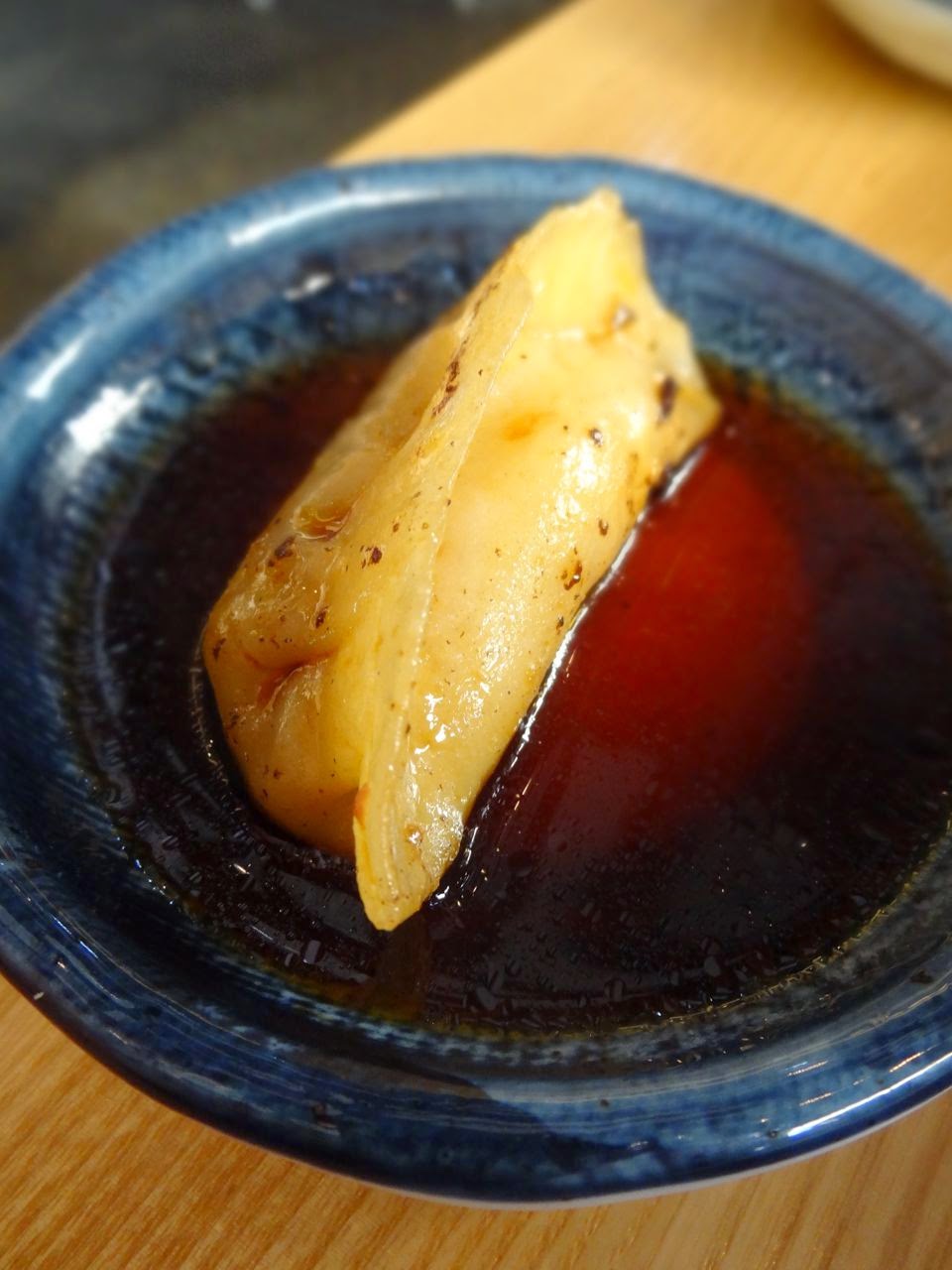Hokkaido Ramen Santouka, Toronto's first location of the Japanese noodle chain hailing from Hokkaido, opened just over 2 years ago and is riding the rapacious Ramen wave that's hit the city like a tsunami. The glass-fronted noodle emporium on Dundas East specializes in Tonkatsu-style broth – a creamy broth built from simmering pork bones for two days, with Chashu pork being by far the most popular ramen topping. Though the name is derived from the Chinese char siu roast pork, the Japanese version is made by simmering pork in a sweet soy and mirin sauce until it's fall-apart tender. Wood Ear Mushrooms, also called Jelly Ear, are a dehydrated fungus that is then rehydrated and sliced, and adds a wonderful umami quality to Santouka's Miso and Shoya Ramen Soups. Hiroshi Asada, who oversees Canadian operations, says that consistency is key to the brand’s success: “What sets us apart is that we’re a chain, and we stick to the same recipe that got us here.” It’s clearly working, for there are long lineups at both lunch and dinnertime, but it's definitely worth the wait. Winter is ramen slurping season, and with temperatures hovering well below freezing, a steaming bowl of ramen is the perfect cure for the cold weather woes.
One of the bandana-clad ramen brigade in Santouka's open kitchen
A tall glass of cold Japanese Sapporo beer
To begin, a platter of warm Pork Gyoza
Seasoned in a small pool of soy gives the gyoza a bright earthy umami flavour
Miso Ramen Soup made from a mixture of pork broth and a rich and hearty miso paste, topped with dried seaweed, cha-cha pork, bamboo shoot, chopped scallions and jelly ear
Shoyu Ramen Soup, made from a mixture of pork broth and soy sauce topped with dried seaweed, cha-cha pork, bamboo shoot, chopped scallions and jelly ear
Tonkotsu Ramen Broth
Makes about 3 quarts broth, serving 6 to 8
3 lb pig trotters, split lengthwise or cut crosswise into 1-inch disks
2 lb chicken backs and carcasses, skin and excess fat removed
2 tbsp vegetable oil
1 large onion, skin on, roughly chopped
12 garlic cloves
1 3-inch knob ginger, roughly chopped
2 whole leeks, washed and roughly chopped
2 dozen scallions, white parts only, reserve light green parts for garnish
6 oz whole mushrooms
1 lb slab pork fat back
Place pork and chicken bones in a large stockpot and cover with cold water. Place on a burner over high heat and bring to a boil. Remove from heat as soon as boil is reached.
While pot is heating, heat vegetable oil in a medium cast iron or non-stick skillet over high heat until lightly smoking. Add onions, garlic, and ginger. Cook, tossing occasionally until deeply charred on most sides, about 15 minutes total. Set aside.
Once pot has come to a boil, dump water down the drain. Carefully wash all bones under cold running water, removing any bits of dark marrow or coagulated blood. Bones should be uniform grey/white after you've scrubbed them. Use a chopstick to help remove small bits of dark marrow from inside the trotters or near the chicken's spines.
Return bones to pot along with charred vegetables, leeks, scallion whites, mushrooms, and pork fatback. Top up with cold water. Bring to a rolling boil over high heat, skimming off any scum that appears — this should stop appearing within the first 20 minutes or so. Use a clean sponge or moist paper towels to wipe and black or gray scum off from around the rim of the pot. Reduce heat to a bare simmer and place a heavy lid on top.
Once the lid is on, check the pot after 15 minutes. It should be at a slow rolling boil. If not, increase or decrease heat slightly to adjust boiling speed. Boil broth until pork fatback is completely tender, about 4 hours. Carefully remove pork fat with a slotted spatula. Transfer fatback to a sealed container and refrigerate until step 7. Return lid to pot and continue cooking until broth is opaque with the texture of light cream, about 6 to 8 hours longer, topping up as necessary to keep bones submerged at all times. If you must leave the pot unattended for an extended period of time, top up the pot and reduce the heat to the lowest setting while you are gone. Return to a boil when you come back and continue cooking, topping up with more water as necessary.
Once broth is ready, cook over high heat until reduced to around 3 quarts. Strain through a fine mesh strainer into a clean pot. Discard solids. For an even cleaner soup, strain again through a chinois or a fine mesh strainer lined with several layers of cheese cloth. Skim liquid fat from top with a ladle and discard.
Finely chop cooked pork fatback and whisk into finished broth. To serve, season broth with condiments of your choice — salt, soy sauce, miso, sesame paste, grated fresh garlic, chili oil or a mixture of all — and serve with cooked ramen noodles and toppings as desired.










No comments:
Post a Comment